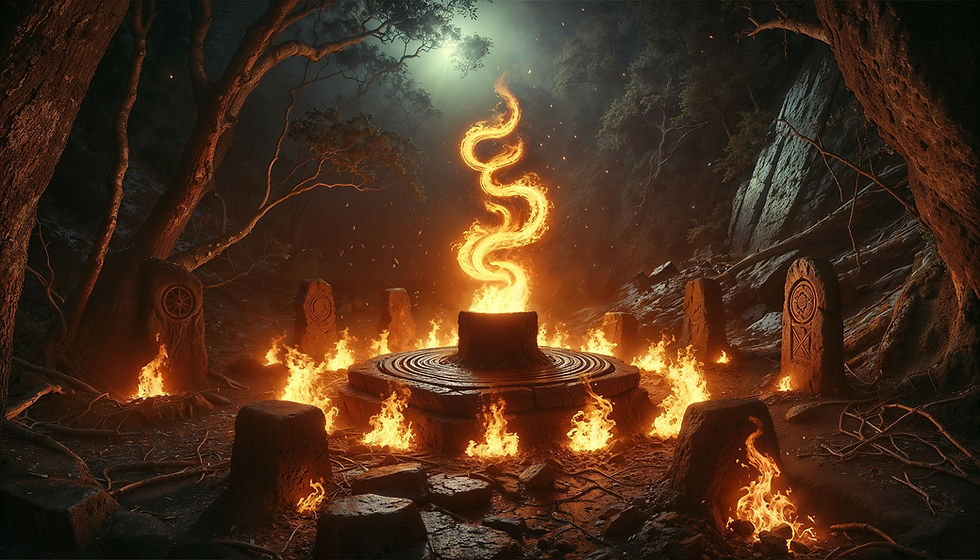When the Wind Changes Without Weather
- RS

- Jul 21
- 2 min read
You’ve felt it, haven’t you?
It happens when you’re alone, folding laundry, when a breathless chill grazes your arm—and the window’s been shut all day. Or when you're speaking aloud to no one in particular, and the air shifts, as if someone just entered the room. You pause. Something has changed.
It isn’t the heater. It isn’t the house settling. This isn’t weather. It’s presence.

The Element of Air is not just wind or breath. It is the carrier of memory, message, and spirit. Ancient rites and modern initiations alike have marked the air not just as a direction, but as an entity: alert, intelligent, and watching.
In nearly every tradition—from the incense-draped temples of Egypt to the feather-adorned ceremonies of the Andes—air is invoked as the messenger. It is the living whisper between worlds.
When the wind changes without weather, the veil is moving.
There are stories: Of shamans in Mongolia who whistle to summon wind spirits before trance. Of African diviners who toss sacred feathers into the air, watching how they land. Of witches who open windows at dawn to release last night’s lingering spirits.
Even now— The modern mage knows the importance of breathwork, of sacred smoke, of spoken spell. Because air is what carries intention.
But not all wind is summoned. Sometimes, it finds you. In a library, where pages flutter before your hand moves. In a forest, when a path you didn’t notice opens with a gust. And when it does, the room knows. Your body knows. Something ancient stirs.
You forget the sentence you were about to say. The candle flickers against the current. Your pet looks at the corner where no one stands.
Rituals of the Air are not just about calling. They are about listening.
Stand outside during a still night. Speak nothing. Breathe. Notice which direction the wind brushes your skin. Did it circle you? Did it come from behind your left shoulder?
Old traditions say the direction of the wind reveals who walks with you:
From the East: a guide, bringing messages
From the West: a loved one, bearing comfort
From the North: a guardian, watching silently
From the South: a challenge, wrapped in wind
Air holds memory. It echoes chants long after they are spoken. In temples, words were once carried in breath, not ink. Priests whispered invocations into gusts to be carried across thresholds.
We forget that wind moves through time as much as space.
That’s why some winds feel familiar. That’s why silence after a gust can feel so full.
Spirits often ride the air. You might not see them. But you feel the charge, the shift, the sense of being watched without malice.
When this happens: Don’t speak immediately. Don’t ask who. Simply breathe in, once. Then exhale—not with fear, but welcome.
You’re not alone. You weren’t meant to be.
And the wind agrees.
So the next time the wind touches your skin in a closed space— and your instincts rise before your thoughts do— don’t dismiss it.
Feel it. Follow it. Let it guide your question, not your fear.
Because air is not empty. It holds watchers. And when the veil moves, it always whispers first.

Explore Further
→ Elements


Comments